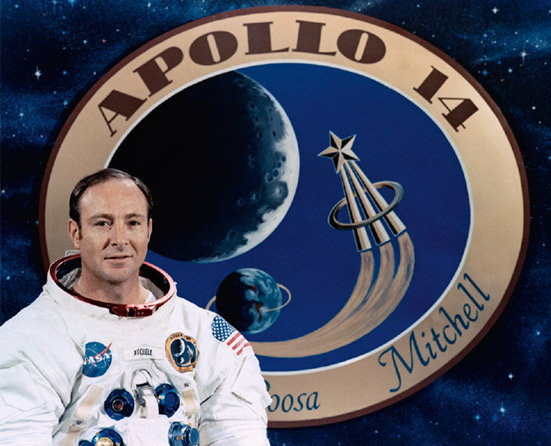|
FORTY-FIVE years after he returned from space, astronaut Edgar Mitchell has embarked on a new adventure that will surely be as revelatory as his lunar landing.
His passing on 4 February, at the age of 85, was announced by the Institute of Noetic Sciences (IONS), the organisation he founded in 1973, just two years after his momentous space flight. Its objective – to research the nature of consciousness – was inspired in part by an experience during the Apollo 14 mission in 1971.
|
 |
| |
Edgar Mitchell (Photo: NASA)
|
Mitchell was the module pilot alongside commander Alan Shepard Jr, becoming the sixth man to walk on the moon. During their 33-hour stay on the lunar surface, they deployed scientific instruments, performed communications tests and photographed the surface and themselves, standing alongside the US flag.
“There was a sense that our presence as space travellers, and the existence of the universe itself, was not accidental but that there was an intelligent process at work,” he wrote on his return.
It was a moment on his return flight to Earth that triggered these thoughts and led to him committing his life to supporting a sustainable future.
In a tribute to its founder on the IONS website, Cassandra Vieten, president and chief executive, explains: “As he gazed at Earth floating in the vastness of space and contemplated the history and hopes of humankind on that lonely blue sphere, he was engulfed by a profound sense of universal connectedness.”
This is how Mitchell described that moment:
“I realised that the story of ourselves as told by science – our cosmology, our religion – was incomplete and likely flawed. I recognised that the Newtonian idea of separate, independent, discrete things in the universe wasn’t a fully accurate description. What was needed was a new story of who we are and what we are capable of becoming...
“I was overwhelmed with the sensation of physically and mentally extending out into the cosmos. The restraints and boundaries of flesh and bone fell away.”
He concluded that the same amount of effort and ingenuity that has been dedicated to the exploration of outer space should be directed toward the investigation of the inner world – our consciousness – and has been actively engaged in pursuing that goal ever since. As a result, he was often described as a “cosmic activist”.
In fact, Mitchell’s mind was already open to the reality of the paranormal while he was training for the Apollo mission. He even arranged a telepathic experiment with a number of individuals, including Harold Sherman, a noted exponent of extra-sensory perception. When analysed, the results were found to be significant.
Furthermore, three years after the Apollo mission, an anthology, Psychic Exploration: a challenge for science, which he edited, was published. Recently republished, this 30-chapter tome has been described as “a primer on psychic research, life’s purpose, and the meaning of the universe”.
Mitchell was also a witness to early experiments conducted with Uri Geller at the Stanford Research Institute, California.
IONS, which now has seven scientists dedicated to the study of “frontier topics in consciousness” and an 80,000-strong global community of followers, says it is proud to carry on the legacy of its founder.
|

